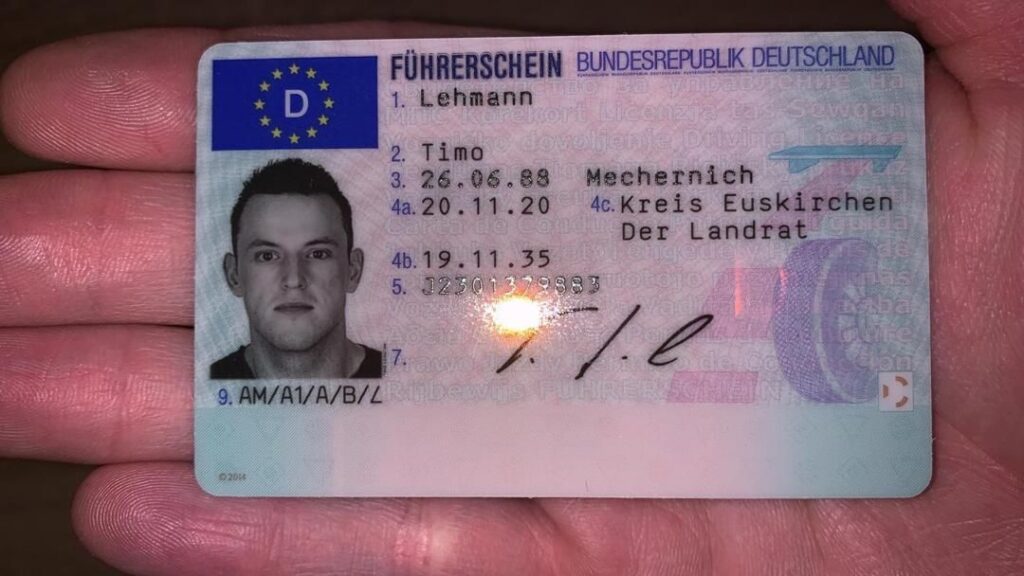Ten Things You Learned In Kindergarden That'll Help You With Buy A Driver's License – Experience
The Process of Obtaining a Driver's License: An Informative Guide
Obtaining a motorist's license is a substantial turning point in many people' lives. It is typically viewed as the primary step towards self-reliance and duty. This post provides a comprehensive introduction of the procedure included in acquiring a chauffeur's license, including the experiences that include it. From comprehending the various kinds of licenses to navigating through the application procedure, this guide will assist aiming motorists get ready for the road ahead.
Understanding the Different Types of Driver's Licenses
Before beginning the application process, it is vital to comprehend the different types of motorist's licenses offered. It should be noted that licensing classifications may differ by state or country; nevertheless, the general classifications are as follows:
License Type
Description
Learner's Permit
A restricted license allowing brand-new motorists to practice under guidance.
Class C License
The most common license type that permits people to operate standard vehicles.
Class B License
Needed for drivers of larger cars, such as buses or trucks.
Class A License
Necessary for operating heavy trucks and big trailers.
Motorcycle License
Specifically for operating motorbikes.
Understanding these classifications helps individuals select the proper license type based on their driving requirements.
Actions to Obtain a Driver's License
Acquiring a driver's license generally includes a series of distinct actions. Here's a structured outline that aspiring chauffeurs can follow:
1. Research study and Choose a Driving School
- Examine regional schools to find one that fits your requirements.
- Check online evaluations and ask for recommendations.
- Confirm the school's accreditation and licensing.
2. Get a Learner's Permit
- A lot of jurisdictions require brand-new chauffeurs to obtain a student's license initially.
- Get ready for a composed test to examine your understanding of roadway signs and traffic laws.
- After acquiring the permit, practice driving under supervision.
3. Complete Driver's Education
- Enlist in a motorist's education course, which frequently consists of class instruction and behind-the-wheel training.
- Finishing a state-approved course may minimize your wait time for a complete license.
4. Practice Driving
- Spend adequate time practicing driving with a licensed instructor or a knowledgeable chauffeur.
- Concentrate on different driving conditions, such as night driving and highway cruising.
5. Arrange Your Driving Test
- Once you feel prepared, schedule your driving test through your regional Department of Motor Vehicles (DMV) or comparable.
- Guarantee all essential documents are prepared ahead of time.
6. Take the Driving Test
- Get to the screening center with all needed documents.
- Total both the composed and practical driving evaluations.
7. Receive Your Driver's License
- After passing both tests, you will be released a driver's license.
- Acquaint yourself with any restrictions connected with your brand-new license.
Creating an organized technique assists simplify the experience, making it less overwhelming for brand-new chauffeurs.
Common Experiences During the Licensing Process
The roadway to acquiring a motorist's license is filled with various experiences. Lots of people come across difficulties and victories along the way. Here are some typical experiences reported by new drivers:
Nervousness During Testing
- It is common for brand-new chauffeurs to feel nervous before taking their tests. This stress and anxiety can be dealt with through ample practice and relaxation techniques.
Learning from Mistakes
- Making errors becomes part of the learning process. Numerous individuals report discovering vital driving abilities from preliminary failures during session or tests.
Getting Confidence
- As experience builds and driving skills enhance, many people describe a significant increase in self-confidence behind the wheel.
The Freedom of Driving
- The excitement and freedom of making a chauffeur's license often surpass the difficulties of the process. Lots of motorists treasure the newfound independence that features having a license.
Establishing Responsibility
- With the privilege of driving comes the responsibility of making sure safety for oneself and others on the road. Many brand-new motorists express an increased sense of accountability.
Regularly Asked Questions (FAQs)
1. How old do I need to be to apply for a driver's license?
A lot of states need candidates to be a minimum of 16 years old to apply for a learner's license, and 18 years old for a complete chauffeur's license.
2. What Fuhrerschein-Kaufen-Ohne-Vorkasse are required for the application?
Typically required documents consist of evidence of identity (such as a birth certificate), Social Security number, evidence of residency, and completion of a chauffeur's education course if applicable.
3. How much does it cost to acquire a driver's license?
The cost varies substantially by state or country, ranging from ₤ 20 to ₤ 100, depending on different elements such as screening charges and educational courses.
4. Can I drive with a student's license?
Yes, however with particular limitations; typically, a certified driver must accompany you.
5. The length of time is a motorist's license valid?
A lot of motorist's licenses are valid for 4 to 8 years, depending upon the state guidelines.
Acquiring a chauffeur's license is a diverse process that mixes knowing, practice, and duty. By comprehending the different types of licenses, following a structured method, and acknowledging common experiences, potential drivers can browse their way towards getting this important credential. Whether it represents newly found independence or a chauffeur's lifelong journey, the value of a motorist's license stays a meaningful aspect of individual advancement and mobility in today's world.
